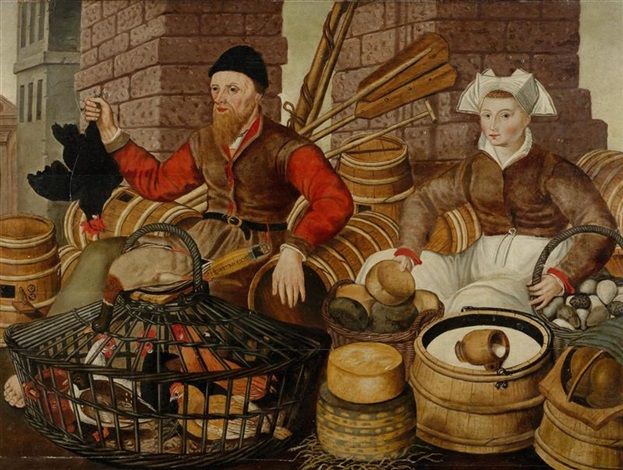Trade in Ancient Egypt

Contents
- Introduction
- Local Trade
- International trades of Ancient Egypt
- Land Routes Of Egyptian Trade
- The maritime routes of ancient Egypt
- Source

Introduction
Trades in Ancient Egypt are an important part of the culture and history of this ancient civilization. Trades have been documented as far back as 3,000 BC when the first pharaohs rose to power. The ancient Egyptians traded goods with other civilizations such as Mesopotamia and Nubia, exchanging luxury items like gold and precious stones. As well as trading items, ancient Egyptians also exchanged knowledge and ideas with other cultures through trade routes that stretched from North Africa to Southwest Asia.
The most common trades practised by the Ancient Egyptians were agriculture, which included growing crops like wheat and barley; animal husbandry which focused on raising livestock for food; and fishing, a major source of food for Ancient Egyptians living along the Nile River.
Local Trade
In ancient Egypt, it was common for trade to be conducted between the two distinct regions of Upper and Lower Egypt. These trades took place along the Nile River and were essential for both regions’ economic sustainability. Upper Egypt was known primarily as a region of agricultural production, while Lower Egypt was famed for its trade routes that connected far-reaching civilizations.
Trades between these two regions often required goods to be transported by foot or via boats navigating the Nile River. The most commonly traded items included papyrus paper and reeds from Lower Egypt, which were used to make furniture and writing materials in Upper Egypt. In return, the people of Lower Egypt received food products such as grain and beer from Upper Egyptian farmers.
Trade in Egypt began during the predynastic period (6000-3150 BCE) and continued to Roman Egypt (30BCE-646CE). For most of its history Egyptian trade system was operated through a barter system.
International trades of Ancient Egypt
Trade between Egypt and Babylonia (Mesopotamia) has been an integral part of the history of the ancient world for centuries. As two of the most powerful civilizations during their respective periods, these two cultures had a significant relationship that led to an array of trade goods being exchanged between them. A key area in which this trade flourished was agriculture, with a great abundance of resources and products being imported from both regions.
In the second dynasty of ancient Egypt, Babylonia provided timber which could not be found in Egypt. The most common goods that were traded included grain, oil, dates, wool and other fabrics. Goods were typically shipped via watercrafts such as boats or rafts along river systems like the Tigris-Euphrates River Valley or over land through caravans carrying goods on donkeys or camels. This type of trade allowed for not only commodities to be exchanged but also for knowledge to travel between cultures – allowing cultural growth and advances in technology throughout the region.
Egypt had trade relations with Syria, Southern Canaan, Lebanon Ethiopia, Nubia, Palestine and Greeks. Their Main Commodities of Import-Export were papyrus, obsidian, electrum, myrrh, malachite, grain, gold, linen etc.
Land Routes Of Egyptian Trade
The trade land routes of ancient Egypt have remained an integral component of the history and development of the region. The earliest documented evidence of such trading networks dates back to the 5th dynasty (c. 2510-2460 BCE), where goods were imported from, as well as exported to, neighbouring countries and regions for both economic and political gain.
In order to effectively facilitate this network, a complex system of roads was established along the Nile Valley and Delta, providing access to resources that were otherwise inaccessible by boat or other means. These routes also enabled merchants to travel great distances in order to trade their wares or provide services. As a result, Egypt became increasingly integrated with its surrounding districts through cultural exchange and bartering practices.
The Maritime Routes of Ancient Egypt
Maritime Routes of Ancient Egypt were essential to the development of trade and commerce in the region. These sea routes were used to transport goods as well as connect with distant cultures and kingdoms. The Egyptians utilized their coastal location to establish trading relations with other nations, allowing them to obtain raw materials from around the Mediterranean and beyond.
Due to its strategic location, Egypt was ideally situated for long-distance trade. Ships sailed upriver along the Nile or out through the Red Sea and into the Indian Ocean. In addition, ships sailing along the Nile could also access an extensive network of canals connecting it with various ports on both sides of its delta. This allowed for easy access to ports such as Byblos, Tyre, Gaza and Alexandria, all major hubs of international trade at that time.
Source


